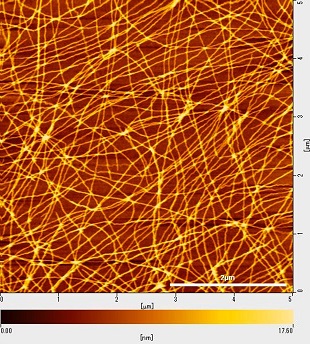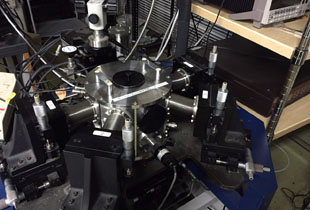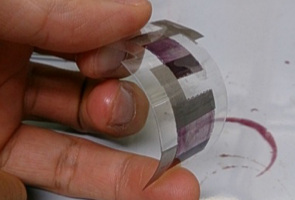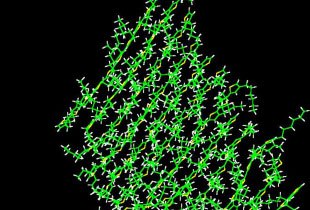Organic electronics using polymer nanofiber

Research members: Dr. Takeshi Shimomura
Research fields: Materials chemistry, Applied chemistry, Applied physics
Departments: Department of Organic and Polymer Materials Chemistry, Institute of Engineering
Keywords: Conducting Polymer, Nanofiber, Organic Electronics, FET
Summary

Recently, nanofibers have attracted increasing interest owing to their unique structure and properties, such as high aspect ratio, large specific surface area, and chemical/mechanical stabilities in various fields such as filtration, electronic devices, and sensors. In particular, the nanofiber with electronic function is expected to be used as flexible semiconductor for flexible electronics of post-silicon age. In particular, we focused on the whisker-type nanofiber formed in a solution with the thickness of about 10 nm, which has great possibilities for wiring and functional materials for future electronic devices. We clarified that this nanofiber with large aspect ratio had higher crystallinity and carrier mobility than non-nanofibrillar film.
1) Field-effect transistor of single nanofiber and its electric properties.
2) Molecular dynamics to investigate the mechanisms of nanofiber formation.
3) Semiconducting composite films embedded the nanofiber in conventional polymers.
4) Thermoelectric sheet devices using the nanofiber with low-dimensionality.
Reference articles and patents
[1]T. Miki, Y. Murasawa, B. Aronggaowa, Y. Ota, S. Heike, T. Hashizume and T. Shimomura. “Insulator surface modification of field-effect transistor using isolated poly(3-hexylthiophene) nanofiber”. Synth. Met., Vol.75, 200–204, 2013.
[2]Y. Takizawa, T. Shimomura, T. Miura. “Simulation Study of the Initial Crystallization Processes of Poly(3-hexylthiophene) in Solution: Ordering Dynamics of Main Chains and Side Chains”. J. Phys. Chem. B, Vol.117(20), 6282–6289, 2013.
[3]K. Yoshida, M. Kawasaki, Y. Toda, S. Yamashita, T. Shimomura. “Microscopic conduction pathways of poly(3-hexylthiophene) nanofibers embedded in polymer film”. Polym. J., Vol.44(5), 371–374, 2012.
[4]T. Shimomura, T. Takahashi, Y. Ichimura, S. Nakagawa, K. Noguchi, S. Heike and T. Hashizume. ” Relationship between structural coherence and intrinsic carrier transport in an isolated poly(3-hexylthiophene) nanofiber”. Phys. Rev. B, Vol.83 (11) , 115314-1-10, 2011.
[5]S. Samitsu, T. Shimomura, S. Heike, T. Hashizume and K. Ito. “Field-Effect Carrier Transport in Poly(3-alkylthiophene) Nanofiber Networks and Isolated Nanofibers”. Macromolecules, Vol.43(19), 7891-7894, 2010.
[6]S. Samitsu, T. Shimomura, S. Heike, T. Hashizume and K. Ito. “Effective Production of Poly (3-alkylthiophene) Nanofibers by means of Whisker Method using Anisole Solvent: Structural, Optical, and Electrical Properties”. Macromolecules, Vol.41(21), 8000–8010, 2008.
Contact
University Research Administration Center(URAC),
Tokyo University of Agriculture andTechnology
urac[at]ml.tuat.ac.jp
(Please replace [at] with @.)



